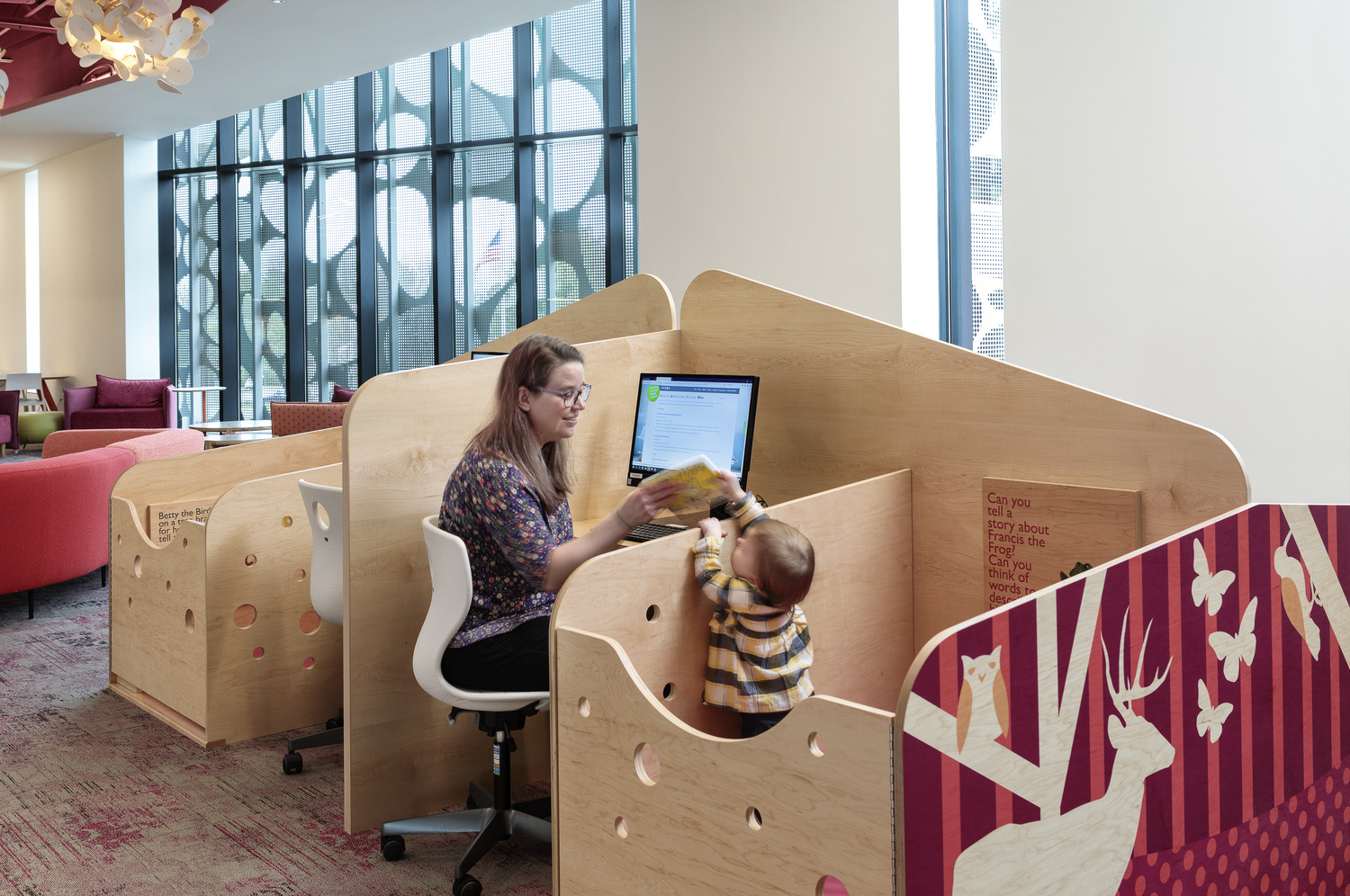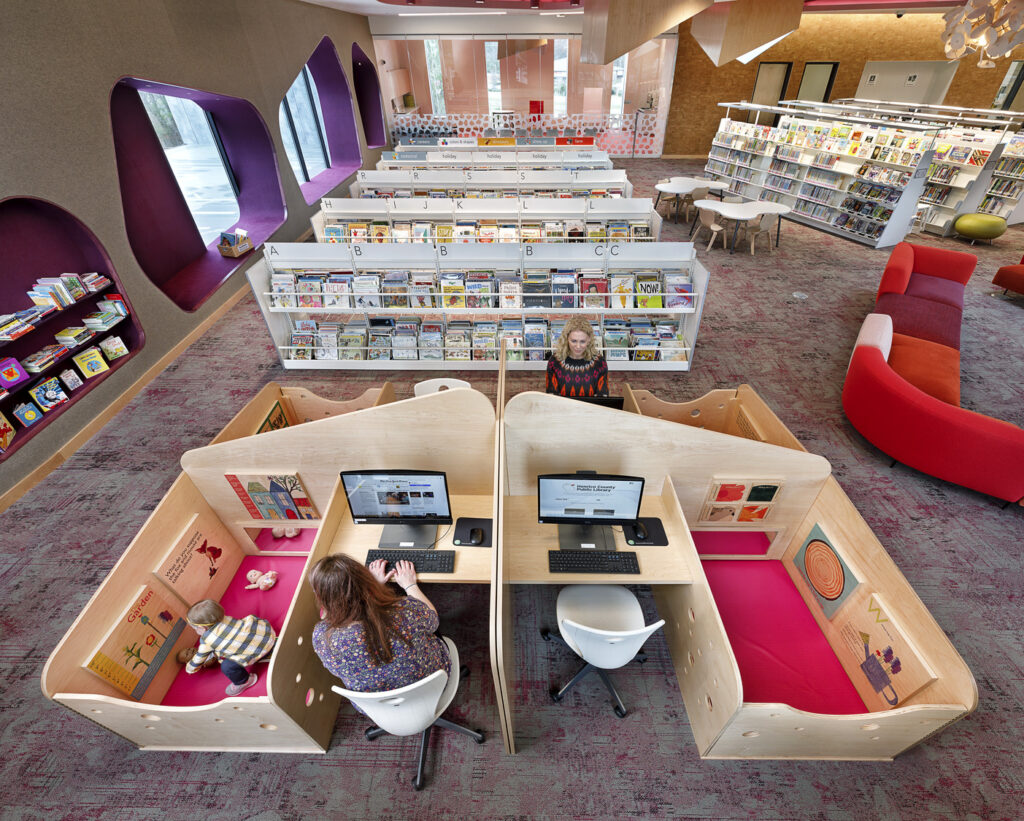
As designers, we often find that the best ideas emerge through our conversations with clients early in the planning process. Whether we’re informally reviewing space requirements or engaging in formal surveys, planning sessions, or design charrettes, thoughtful suggestions from clients are the key ingredients that inform our design concepts and lead to successful projects.
In some cases, a suggestion leads to a truly innovative idea or custom solution. That was the case with the design of the Fairfield Area Library, a new, two-story facility in Henrico County, Virginia. In talking with the library director and staff, a challenge arose: could we design something that would accommodate parents with infants or toddlers who want to use the library’s computers?
A Custom Solution
Research revealed that there was nothing readily available on the market that would fit the bill. We began working with TMC Furniture, a nationally recognized furniture design and manufacturing company, to create a custom workstation. TMC specializes in furniture for library and educational settings, so they understood the important parameters: the piece had to be age-appropriate for both adults and infants, safe, durable, and easy to clean; and it needed to fit within the overall design aesthetic for the library’s interiors.
We exchanged sketches, compared notes, and engaged in charrettes with library staff to refine ideas. The workstation, which features a desk with privacy panels and an attached play area, evolved through our discussions and reviews until we felt confident it would meet the library’s needs as well as our design vision.

Meeting Standards for Function and Aesthetics
In the Fairfield Area Library, there are four of the custom workstations, now branded as “The Fairfield” by TMC. Positioning the workstations in the children’s area on the second floor enables parents and caregivers to use the workstations while older children are reading or playing nearby. The inside of the play space, which is designed for infants and toddlers up to two years of age, features a mirror at the lowest level and a series of interactive learning panels above. Library staff can switch these panels out to provide a variety of content. The exterior panels are adorned with a woodland scene.
The materials and colors of the Fairfield complement the aesthetics of the library interior so that they are an integrated part of the design. Perforated circles in varying shapes allow babies a peek at the outside while also echoing the curvilinear, organic shapes prevalent throughout the children’s area. While they are seated at the desk, parents have privacy from adjacent workstations, but can easily see their child in the adjacent play area.
Maintaining sanitary surfaces was a primary concern. The vinyl mat can easily be wiped down multiple times a day as needed. Both the mat and maple finish on the workstation are non-toxic and durable for frequent cleanings. A gate on the play area also simplifies access for cleaning.
In the Fairfield Area Library, there are four of the custom workstations, now branded as “The Fairfield” by TMC.

A Place for Families
It has been gratifying to see that the family workstations have been a hit, even at the opening day reception. A woman with an infant and a small child immediately tried one out, and later said, “I’m going to be in the library all the time because you’ve got a place for me.” The popularity of these accommodations suggest that they might be useful in workplace settings as well as libraries. Recognizing a need, sharing ideas, and finding a solution: the Fairfield workstation represents design collaboration and creativity at its best.
Reprinted with permission from Quinn Evans Architects. This article originally appeared on the Quinn Evans website.
